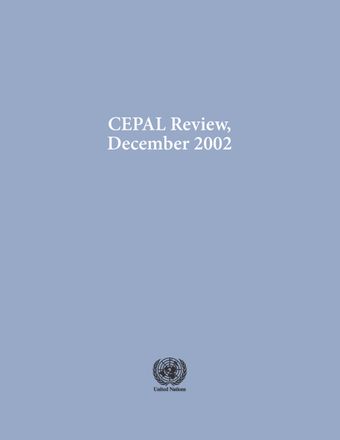-
United States interest rates, Latin American debt and financial contagion
- Source: CEPAL Review, Volume 2002, Issue 78, Dec 2002, p. 83 - 99
- Spanish
-
- 03 Dec 2002
Abstract
This article analyses the way in which Latin American bond spreads were affected by the changes in United States interest rates in the second half of the 1990s. Empirical analysis shows that, contrary to theory, in this period the spreads of emerging market bonds and United States interest rates moved in opposite directions; that there was financial contagion; that contraction of liquidity and financial contagion can offset the effects of those interest rates on the spreads of emerging market bonds at times of economic and financial turbulence and thus become the most important factors in the evolution of those spreads; and that the increased financial integration associated with the current globalization process has heightened the vulnerability of the developing economies to external shocks.





